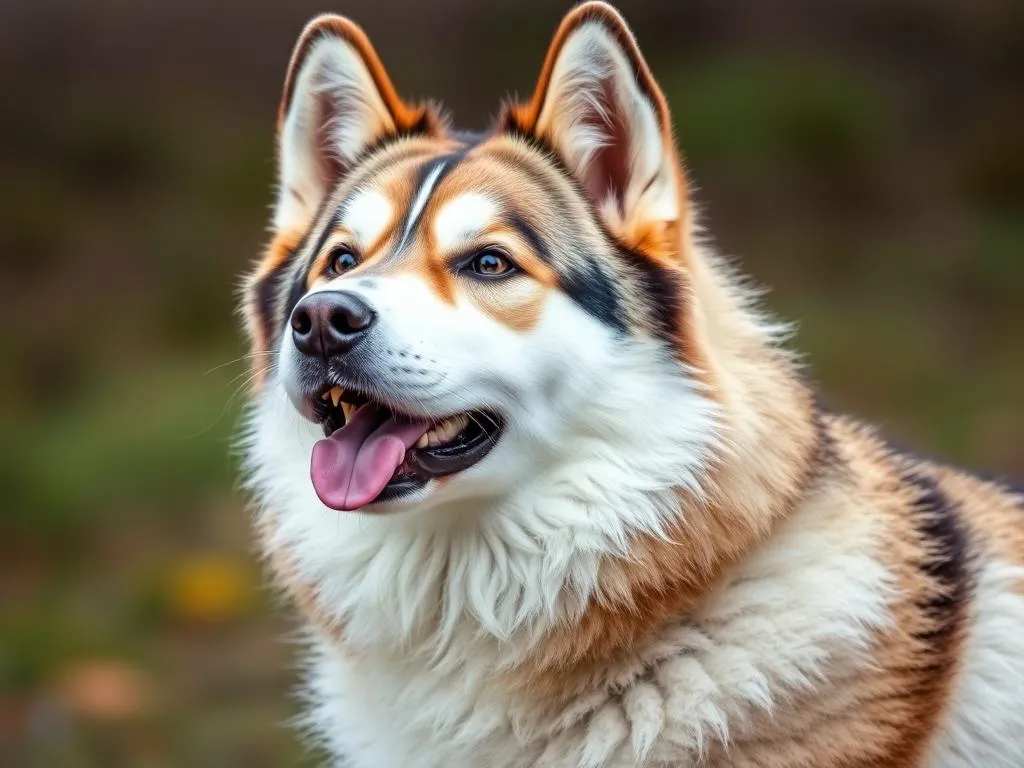
Introduction
Mixed breeds have surged in popularity over the years, capturing the hearts of dog lovers worldwide. Among these, the Jindo Husky mix stands out for its unique blend of characteristics from its parent breeds—the Jindo and the Siberian Husky. Understanding the nuances of this mix is essential for potential owners, as it allows them to appreciate the traits, needs, and overall care required for these extraordinary dogs.
Understanding the Parent Breeds
The Jindo
Originating from Jindo Island in South Korea, the Jindo is a breed known for its loyalty and hunting prowess. This breed has a rich history, often celebrated in Korean culture for its exceptional abilities in tracking and hunting game.
Physical Characteristics: Jindos typically weigh between 30 to 50 pounds and stand about 18 to 22 inches tall. Their coat is double-layered, offering protection from harsh weather, and can come in various colors, including white, black, and brindle.
Temperament: Jindos are known for their intelligence and independence. They are naturally protective and tend to bond closely with their families. However, they can be wary of strangers, which makes early socialization crucial.
Health Issues: Some common health concerns in Jindos include hip dysplasia, allergies, and certain eye conditions. Regular veterinary check-ups are vital to monitor these potential issues.
The Siberian Husky
The Siberian Husky has its roots in Siberia, where they were bred by the Chukchi people for sledding and companionship. Recognized for their striking looks and endurance, Huskies have become beloved pets globally.
Physical Characteristics: Weighing between 35 to 60 pounds and standing 20 to 24 inches tall, Huskies boast a thick, double coat that comes in various colors and patterns. Their piercing blue or multicolored eyes add to their striking appearance.
Temperament: Huskies are known for their friendly and outgoing nature. They are energetic, playful, and often get along well with children and other dogs. However, their high prey drive means they may not be suitable for homes with small pets.
Health Issues: Huskies are prone to health issues such as hip dysplasia, eye disorders like cataracts, and skin problems. Regular health evaluations are essential to maintain their well-being.
Characteristics of the Jindo Husky Mix
Appearance
The Jindo Husky mix can inherit a variety of physical traits from both parent breeds. Generally, you can expect a medium-sized dog, weighing between 30 to 60 pounds. Their coat may range from the thick, double-layered coat of the Husky to the shorter, denser coat of the Jindo, often resulting in a beautiful blend of colors.
Temperament
When it comes to temperament, the Jindo Husky mix typically exhibits a delightful mix of traits. These dogs are often independent yet loyal, combining the Jindo’s protectiveness with the Husky’s friendly demeanor. They generally require socialization from an early age to prevent shyness or fearfulness around strangers.
Energy levels tend to be high, necessitating regular exercise and mental stimulation. This mix is ideal for active families who can provide ample playtime and outdoor activities.
Health Considerations
As with any mixed breed, the Jindo Husky mix may inherit health issues from either parent. Common concerns include hip dysplasia, skin problems, and eye conditions. A healthy diet, regular exercise, and routine veterinary check-ups can help mitigate these risks. The average lifespan for this mix ranges from 12 to 15 years, similar to both parent breeds.
Training and Socialization
Training Techniques
Training a Jindo Husky mix can be a rewarding experience, but it may require patience and consistency. Positive reinforcement methods, such as treats and praise, work best for this intelligent breed. However, be prepared for potential stubbornness, a trait inherited from both parents. Early obedience training is crucial to establish good behavior.
Socialization Needs
Early socialization is vital for the Jindo Husky mix. Exposing them to various environments, people, and other animals will help ensure they develop into well-rounded adults. Begin socialization during puppyhood and continue throughout their lives. Challenges may arise, particularly if they inherit the Jindo’s natural wariness, so gradual exposure is key.
Living with a Jindo Husky Mix
Ideal Living Conditions
The Jindo Husky mix thrives in environments that provide ample space to roam and play. While they can adapt to urban living, a home with a secure yard is ideal. These dogs enjoy outdoor activities and require regular exercise. They also adapt well to cold climates, but care should be taken in warmer regions to avoid overheating.
Daily Care and Maintenance
Feeding a Jindo Husky mix requires attention to their dietary needs. A high-quality dog food, appropriate for their age, size, and activity level, is essential. Regular exercise is crucial; aim for at least 60 minutes of activity each day, including walks, playtime, and mental stimulation.
Grooming needs will depend on the coat type of the individual dog. Regular brushing is required to manage shedding, especially during seasonal changes. Additionally, routine dental care and nail trimming are important aspects of their overall grooming routine.
Pros and Cons of Owning a Jindo Husky Mix
Advantages
The Jindo Husky mix offers several advantages as a pet. Their unique traits combine the loyalty and protectiveness of the Jindo with the friendly and playful nature of the Husky. This mix is well-suited for active lifestyles and can be a wonderful companion for families or individuals who enjoy outdoor activities.
Their loyalty is unmatched, often forming strong bonds with their owners. They can also be excellent watchdogs due to their protective instincts.
Disadvantages
However, owning a Jindo Husky mix is not without challenges. They can be stubborn, making training a bit difficult without consistent methods. Additionally, health considerations can lead to unexpected costs, so it’s crucial to budget for regular veterinary care.
These dogs require a significant time commitment for exercise and mental stimulation. If their needs are not met, they may develop behavioral issues, such as excessive barking or destructive behavior.
Finding a Jindo Husky Mix
Adoption vs Purchase
When considering a Jindo Husky mix, potential owners should weigh the pros and cons of adopting from a rescue versus purchasing from a breeder. Adoption often provides a loving home to a dog in need and can be more affordable upfront. On the other hand, reputable breeders can provide health guarantees and information about the dog’s lineage.
Regardless of the route chosen, it’s essential to research and find reputable sources. Look for breeders or rescues that prioritize the health and well-being of their dogs. Questions to ask may include the dog’s health history, temperament, and socialization experiences.
Cost Considerations
The cost of bringing a Jindo Husky mix into your home can vary widely. Adoption fees typically range from $100 to $300, while purchasing from a breeder can cost anywhere from $500 to $1,500, depending on the breeder’s reputation and the dog’s lineage.
Ongoing costs, such as high-quality food, grooming, and regular veterinary care, should also be factored into your budget. Additionally, it’s wise to set aside funds for unexpected health issues that may arise.
Conclusion
The Jindo Husky mix is a fascinating blend of two remarkable breeds, offering unique traits that can enrich the lives of their owners. Understanding the characteristics, needs, and potential challenges of this mix is essential for anyone considering adding one to their family.
Researching the breed and evaluating your lifestyle are crucial steps before bringing a dog home. By doing so, you can ensure a fulfilling and harmonious relationship with your future furry companion.








